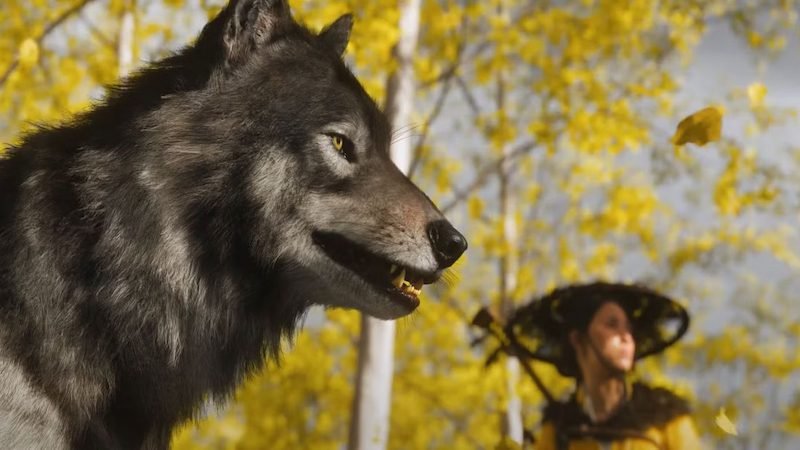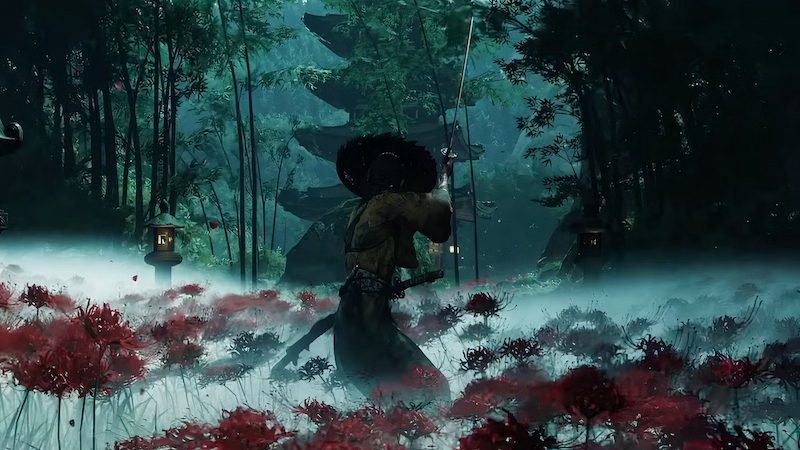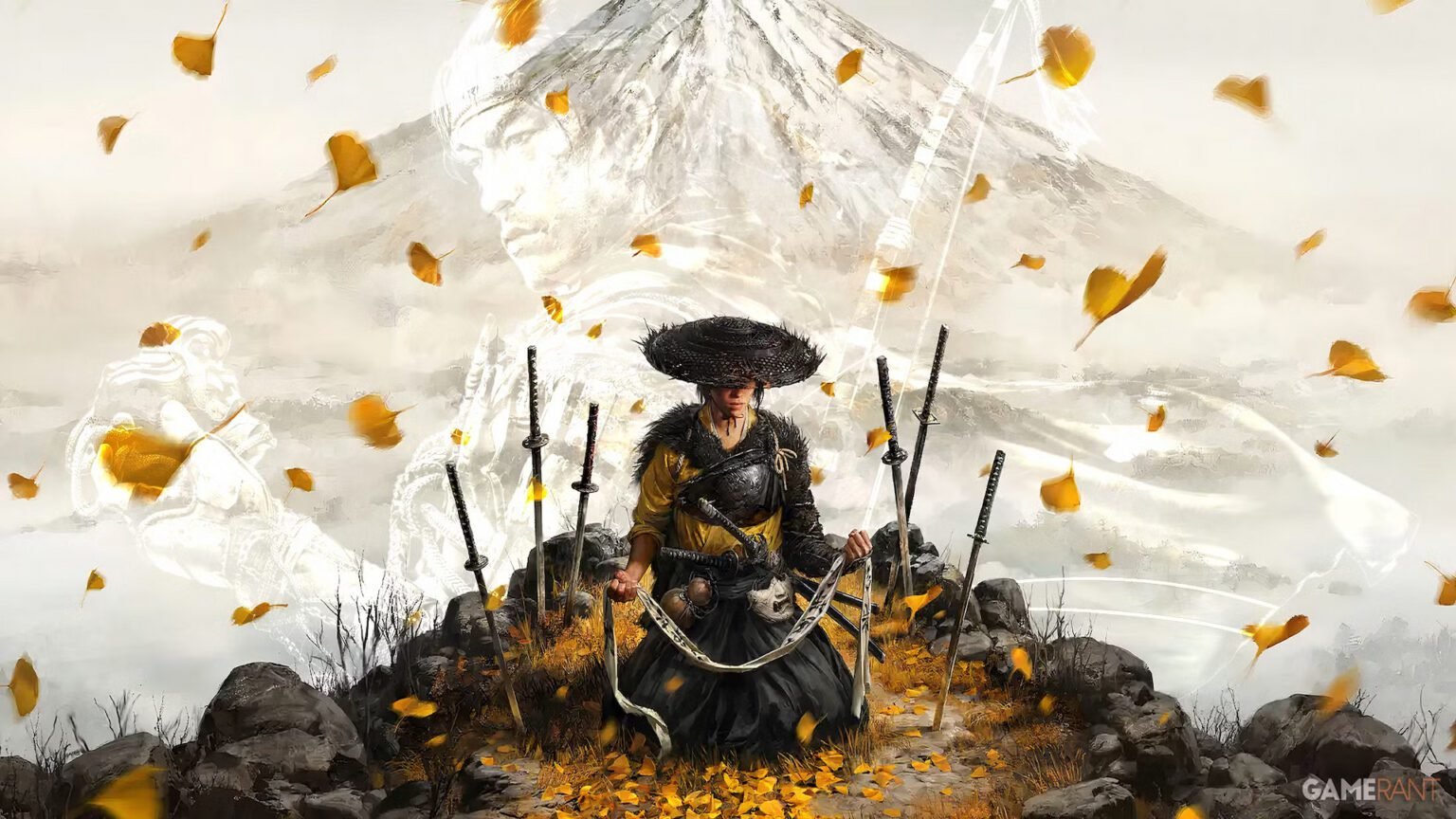When I first heard what Sucker Punch was aiming for with Ghost of Yōtei, I didn’t expect them to change the battle system this much. Honestly, I thought we’d get a few new weapons or maybe some minor tweaks to the stance system. Instead, what we got feels like a complete rethinking of how combat works in an open-world samurai game. And this can become one of the most refreshing changes we’ve seen in a while.
Five Different Melee Weapons
Ghost of Yōtei replaces the stance system of its predecessor with a set of five distinct melee weapons, each offering unique tactical advantages.

- Katana: the balanced, reliable option for general combat.
- Dual Katanas prioritize speed and aggression, ideal against spear-wielding enemies.
- Ōdachi delivers heavy, high-damage strikes, effective against armored foes.
- Spear (Yari) provides reach and control, making it well-suited for spacing and group encounters.
- Kusarigama offers disruptive mid-range attacks, pulling enemies off balance and enabling stealth setups.
From what we’ve seen, this weapon variety might allow for more expressive, reactive combat than the stance system ever did. The fact that you can switch weapons mid-combo could really open the door to stylish, layered fights. Of course, how it feels under the fingers is another question — but the intent here feels ambitious in the best way.
Disarming & Weapon Dropping
One mechanic I am not sure how I feel about is the disarming system. Both you and your enemies can lose weapons mid-fight. Once, you drop your katana and would have to grab another weapon nearby to keep going. I imagine it can become an annoyance, but it also makes the fights feel more real. Messy, but in a good way.
Ranged Tools & Throwables
Ghost of Yōtei retains several familiar ranged tools from Ghost of Tsushima, while introducing new firepower to expand combat variety.
Returning Tools:
- Bow remains a staple for stealth-oriented combat, allowing for silent takedowns at range.
- Kunai and bombs return as quick-use throwables for disrupting enemy groups or creating breathing room during close encounters.
New Addition:
- Musket (or rifle) is a new ranged weapon that delivers high-impact, one-shot kills. Though slower to reload, it offers a powerful option for eliminating heavily armored or high-priority targets at a distance.
While melee remains central to combat, these ranged tools provide tactical flexibility and open up more reactive, situational strategies.
Wolf Buddy & Camping

Atsu’s wolf companion is far more than a cosmetic detail, it actively joins battles, distracting and engaging enemies during stealth and larger group fights. The companion is tied into the new “Wolf Pack” system that replaces the traditional journal. Whenever Atsu sets up camp, anywhere under the stars, the Wolf Pack menu displays portraits of allies, including vendors and mentors, allowing immediate access to gear, upgrades, and quests without menu-diving .
This is a pretty inspired move. Menus have always been a break in immersion, but tying them into in-world rest moments like Dragon’s Dogma 2 or even Red Dead 2 , keeps you anchored in the game’s fiction. It’ll be interesting to see how deep this goes. Does the wolf grow with you? Can it be customized? There’s potential here for real emotional attachment.
Clue Hunts & Bounties
Instead of having birds or wind guide you everywhere, now you will be gathering clue cards. You will get these from interrogations or exploration. It makes things a bit slower but more engaging. And once your bounty goes up, random enemies will start attacking you out of nowhere. It will actually keep you on edge in a way the first game didn’t.
This is one of the smartest evolutions of the original’s exploration. Guiding wind was elegant, but also a bit passive. Clue cards make the process more tactile and earned. Plus, the bounty mechanic could give the world a sense of unpredictability and threat that Tsushima only flirted with.
Cinematic Filters

There’s three modes.
- Kurosawa Mode: Already a part of its predecessor, it’s cool, but hard to play in for long stretches.
- Miike Mode: Pretty intense. Good if you like lots of blood and close-ups.
- Watanabe Mode: Lo-fi music and relaxed vibe. Doesn’t fit every fight, but nice to chill with.
Final Thoughts
Of course, none of this is hands-on yet. It’s early footage, and a lot could change. But if what we saw during State of Play holds up, Ghost of Yōtei might not just be a great sequel, it might be a genre refinement.
Instead of leaning entirely on what Ghost of Tsushima built, this game seems ready to challenge the old systems, ask tougher design questions, and push players into more reactive, improvisational gameplay. Whether all these changes land smoothly or not, it’s clear Sucker Punch is swinging big. And honestly, I’d rather see a sequel take bold risks than coast on nostalgia.





